Pineapple casserole recipe create a perfect balance of sweet and savory flavors, making this dish a beloved staple in Southern cuisine. With its rich history and comforting taste, it has become a favorite at holiday gatherings, family meals, and festive occasions. This dish blends the natural sweetness of pineapple with the creamy, tangy depth of sharp cheddar cheese, resulting in a unique and satisfying contrast that delights the taste buds.
Beyond its role as a side dish, pineapple casserole is incredibly versatile. Depending on how it’s prepared, it can just as easily be served as a sweet dessert rather than a savory accompaniment. Whether paired with ham at a Thanksgiving feast, enjoyed as a warm, cheesy indulgence at Sunday dinner, or transformed into a tropical-inspired treat, this dish has something for everyone.
If you’ve ever wondered what goes in pineapple casserole, you’re in the right place. This guide will take you through everything from core ingredients to creative variations, customization options, and perfect pairings for this mouthwatering dish.
Table of Contents
Key Ingredients in Pineapple Casserole
Pineapple: Fresh vs. Canned
The main ingredient in any pineapple casserole is, of course, pineapple. You can use either fresh pineapple or canned pineapple, depending on what’s available and your personal preference. Each type brings a slightly different flavor and texture to the dish, influencing the final outcome.
Canned pineapple is the most common choice due to its convenience and consistent sweetness. It is readily available year-round and comes in both chunks and crushed varieties, allowing for different textures in the casserole. Pineapple chunks provide a firmer bite, while crushed pineapple blends more smoothly into the dish, creating a softer consistency. Additionally, canned pineapple is already peeled and cut, making it an easy, time-saving option.
Fresh pineapple, on the other hand, offers a more natural and slightly tangy flavor, adding a touch of brightness to the casserole. However, it requires more preparation, including peeling, coring, and chopping. The natural acidity in fresh pineapple can also make balancing the sweetness in the dish a little more challenging, so adjustments may be needed to achieve the perfect flavor profile.
If you’re using canned pineapple, be sure to drain it well to prevent excess moisture from making the casserole too watery. However, you might consider reserving a small amount of the juice to enhance the flavor and add a subtle tang to the dish. Regardless of the type of pineapple you choose, its sweet and tropical essence is what makes this casserole truly special.
Cheese: The Role of Sharp Cheddar
The cheddar cheese used in pineapple casserole brings a rich and creamy element to balance out the sweetness of the pineapple. The sharp variety is the most common choice because of its bold flavor, but you can use mild cheddar or other cheeses depending on your preference.
- Sharp cheddar delivers a tangy contrast to the sweetness of the pineapple, which many people find appealing.
- Mild cheddar offers a creamier, less bold flavor, making it a good choice if you prefer a subtler contrast.
Some people may even mix cheddar with mozzarella for an extra layer of creaminess.
Sugar and Flour: Balancing Sweetness and Thickness
Sugar is a crucial component in pineapple casserole as it helps to sweeten the naturally tangy pineapple. Flour, on the other hand, serves as a thickening agent, ensuring that the casserole has a nice, sturdy consistency once baked.
- Sugar—You can adjust the amount of sugar based on the sweetness of the pineapple you’re using. If you prefer a less sugary dish, try reducing the sugar or using a sugar substitute.
- Flour—The flour helps to bind the ingredients together and thicken the casserole, creating a more cohesive dish.
The right balance of sugar and flour is essential to avoid a casserole that’s too runny or too dense.
Butter: A Rich Base for Flavor
Butter is essential in most casseroles, and pineapple casserole is no exception. It adds richness and helps bind all the ingredients together. When combined with flour and sugar, butter creates a smooth base for the dish.
Additional Ingredients: Salt, Pineapple Juice, Crackers
Pineapple casserole can also include pineapple juice, salt, and crackers to further enhance the flavor and texture:
- Pineapple juice—Reserved from the canned pineapple, it can be added to the casserole to maintain the pineapple flavor while keeping the mixture smooth.
- Salt—A pinch of salt helps to balance the sweetness and bring out the flavors of the other ingredients.
- Crackers—Crushed crackers, such as Ritz crackers, are often sprinkled on top to provide a crunchy texture that contrasts nicely with the creamy casserole.
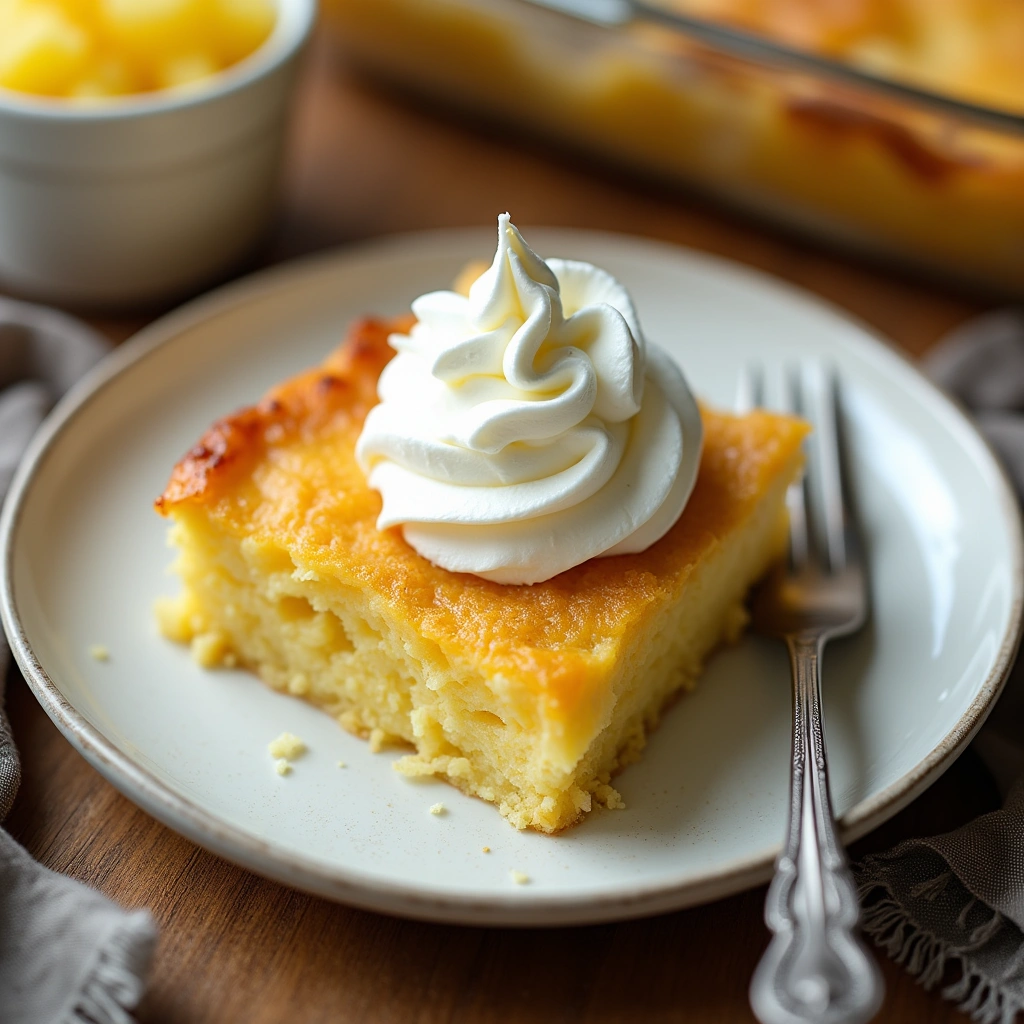
Variations and Customization
One of the best aspects of pineapple casserole is how customizable it is. You can make a few tweaks to the recipe to suit your tastes or dietary needs.
Different Cheese Options
Although cheddar cheese is the classic choice, you can experiment with other types of cheese:
- Mozzarella offers a milder taste and a more gooey texture.
- Parmesan gives a savory, salty contrast that works well in combination with cheddar.
- Swiss cheese can also add a subtle nutty flavor.
You can even combine different cheeses for a more complex flavor profile.
Sweetness Adjustments
If you prefer a less sweet dish, you can adjust the amount of sugar in the casserole. Alternatively, you can use a sugar substitute, such as stevia or monk fruit sweetener, to reduce the overall sweetness.
Add-ins and Substitutions
Some variations of pineapple casserole include extra ingredients to add new flavors and textures:
- Coconut—adds a tropical twist to the dish and enhances the sweetness.
- Pecans—A great way to add a crunchy texture and a nutty flavor.
- Maraschino cherries—These can be added for a touch of color and extra sweetness.
Vegan and Dairy-Free Versions
For those following a vegan or dairy-free diet, there are ways to make pineapple casserole suitable:
- Use vegan cheese or a blend of nutritional yeast and cashew cheese for the cheese.
- Replace butter with vegan butter or coconut oil.
- Substitute egg with a flax egg or other egg replacers.
Step-by-Step Guide to Making Pineapple Casserole
Now that we’ve covered the ingredients and customization options, let’s walk through how to make pineapple casserole from start to finish.
Preparation
Before you start, gather your ingredients and prepare your pineapple:
- Drain the pineapple thoroughly to avoid excess moisture.
- Shred the cheddar cheese or use pre-shredded cheese to save time.
- Prepare any additional ingredients like crushed crackers, if using.
Mixing the Ingredients
Once your ingredients are prepped, follow these steps:
- In a large bowl, combine the pineapple, sugar, flour, cheese, and any reserved pineapple juice.
- Stir the mixture until it’s well combined. Make sure that the cheese is evenly distributed throughout the casserole.
Baking Process
- Preheat your oven to 350°F (175°C).
- Grease a baking dish or casserole dish with butter or cooking spray.
- Pour the mixture into the prepared dish and spread it evenly.
- Top with crushed crackers for a crunchy topping.
- Bake for about 30-40 minutes, or until the casserole is golden brown on top and bubbly around the edges.
Tips for Perfection
- Don’t overmix the casserole—too much stirring can cause it to become mushy.
- Check the casserole after 30 minutes. If it’s golden brown and bubbling, it’s ready to go!
- Let the casserole cool for a few minutes before serving to help it set.
Pineapple Casserole Pairings
Pineapple casserole is a versatile dish that pairs well with many other foods. Here are a few pairing suggestions:
- Smoked Turkey Drumsticks Recipe—The sweet and savory flavor of pineapple casserole pairs perfectly with salty ham or turkey.
- What Pairs Well with Italian Sausage? – For a delicious meal combo, consider pairing pineapple casserole with sausages or a meat-based dish.
- Best Way to Eat Lion’s Mane Mushrooms— For a vegetarian alternative or unique flavor twist, adding mushrooms as a side dish with pineapple casserole can be delightful.
Serving Suggestions: How to Enjoy Pineapple Casserole
One of the best things about pineapple casserole is its versatility. It can be served as a savory side dish or transformed into a sweet dessert, depending on how you prepare and pair it.
As a Side Dish
Traditionally, pineapple casserole is served as a side dish, especially at Southern-style gatherings, holiday feasts, and potlucks. The sweet and savory combination makes it a perfect pairing for rich, salty, and smoky main dishes such as:
- Baked Ham – The tangy-sweet pineapple complements the salty richness of ham.
- Roast Turkey – A great addition to Thanksgiving or Christmas dinners.
- Grilled Chicken or Pork – Balances out smoky, grilled flavors with a hint of sweetness.
- Barbecue Ribs – The bold flavors of barbecue pair well with the creamy pineapple casserole.
As a Dessert
If you prefer a sweeter take, pineapple casserole can easily become a warm, tropical-inspired dessert. Simply:
- Top it with a scoop of vanilla ice cream for a delightful contrast between warm and cold.
- Add a dollop of whipped cream for extra richness.
- Sprinkle with toasted coconut or chopped pecans to enhance texture and flavor.
- Drizzle with caramel sauce or honey for an extra layer of indulgence.
No matter how you serve it, pineapple casserole is a crowd-pleaser that can be enjoyed any time of year!
How to Store and Reheat Leftovers
If you have leftovers, don’t worry—pineapple casserole stores well and can be enjoyed for several days after baking.
Storing Leftovers
- Allow the casserole to cool completely before storing.
- Transfer leftovers to an airtight container or cover the baking dish tightly with plastic wrap or aluminum foil.
- Refrigerate for up to 3-4 days to maintain freshness.
Reheating Instructions
To enjoy your pineapple casserole just as fresh as the day you made it, follow these reheating methods:
Oven Method (Best for Maintaining Texture)
- Preheat your oven to 350°F (175°C).
- Place the casserole in an oven-safe dish (if it’s not already in one).
- Cover with foil to prevent excessive browning.
- Heat for about 10-15 minutes, or until warmed through.
Microwave Method (Quickest Option)
- Place a single serving on a microwave-safe plate.
- Heat in 30-second intervals, stirring between each, until warm.
- Be careful not to overheat, as it can become too soft or mushy.
Freezing Option (Not Recommended for Best Texture)
- Pineapple casserole can be frozen, but the texture may change.
- To freeze, let the casserole cool completely, then store it in an airtight container for up to 2 months.
- To reheat, bake from frozen at 350°F for about 45 minutes, or until heated through.
By following these tips, you can savor the deliciousness of pineapple casserole even after the initial serving!
Nutritional Information
Calories and Macronutrients
The nutritional content of pineapple casserole will depend on the ingredients you use, but here’s a rough breakdown for a typical serving (1/8 of a 9×9-inch casserole):
- Calories: ~300
- Fat: ~15 g
- Carbohydrates: ~40 g
- Protein: ~5 g
Health Considerations
While pineapple casserole is a delicious treat, it’s not the healthiest option if you’re watching your calories or sugar intake. You can modify the recipe by reducing the sugar or using lower-fat cheese to make it a bit healthier.
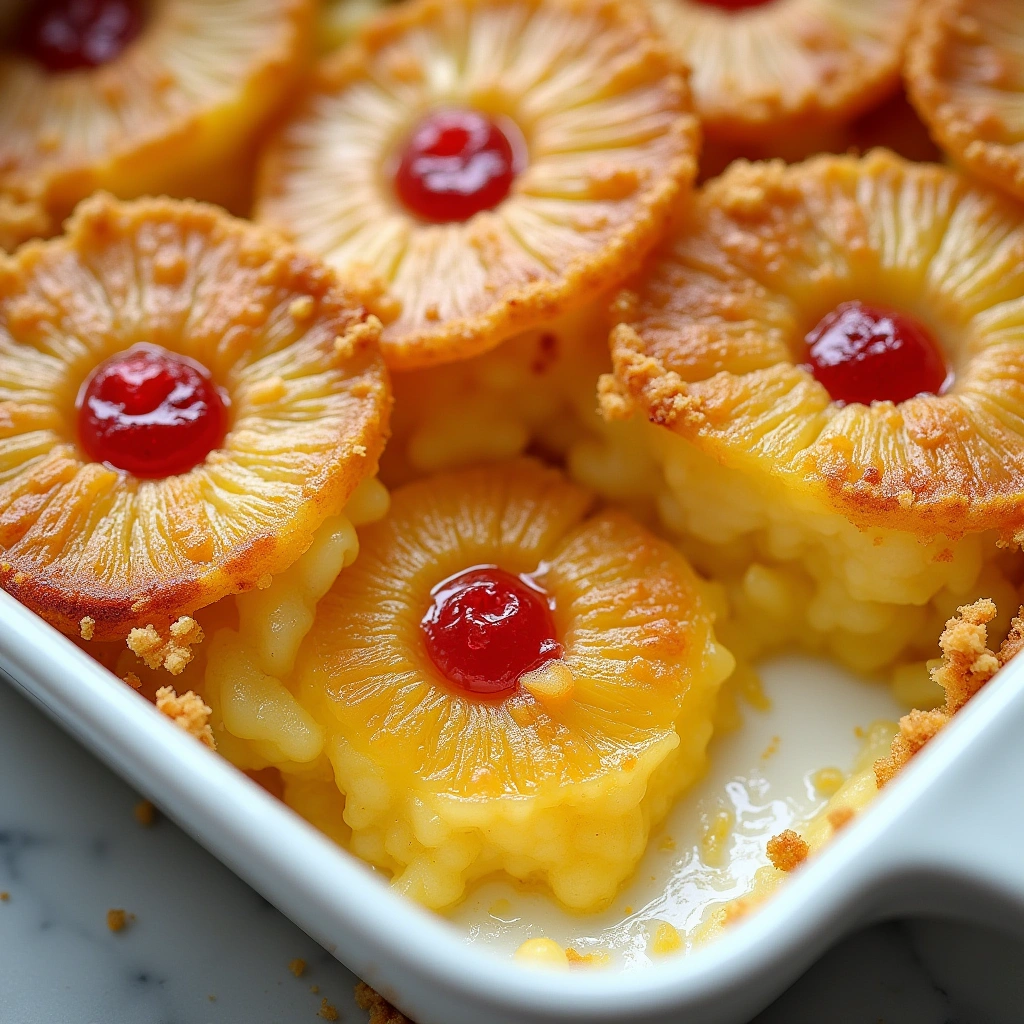
FAQs
What is the best cheese for pineapple casserole?
The best cheese for pineapple casserole is usually sharp cheddar, as it creates a nice balance with the sweetness of the pineapple. However, you can experiment with other cheeses like mozzarella or Swiss for different flavor profiles.
Can I use fresh pineapple instead of canned?
Yes, you can use fresh pineapple, but be sure to drain it well before using it in the casserole to avoid excess moisture.
Can pineapple casserole be made in advance?
Yes, you can prepare the casserole a day beforehand. Just cover it and store it in the refrigerator until you’re ready to bake.
How do I prevent the casserole from being too sweet?
To prevent the casserole from being too sweet, reduce the amount of sugar or use less-sweet pineapple.
Can I freeze pineapple casserole?
Yes, you can freeze pineapple casserole. Just be sure to let it cool completely, then wrap it tightly in plastic wrap and foil. To reheat, bake from frozen at 350°F for about 45 minutes.
Can I use fresh pineapple instead of canned?
Yes, fresh pineapple can be used in pineapple casserole. Just make certain to empty it nicely to avoid excess moisture. Fresh pineapple can add a more natural, tangy flavor to the dish, but canned pineapple offers more consistency and sweetness.
Can I make pineapple casserole ahead of time?
Absolutely! Pineapple casserole can be prepared a day or two in advance. Simply assemble the casserole, cover it, and store it in the refrigerator. When you’re ready to serve, just bake it in the oven as directed. You can also freeze it for later use and reheat it when needed.
Can I make a dairy-free version of pineapple casserole?
Yes, you can make a dairy-free pineapple casserole by using vegan cheese or a dairy-free cheese alternative and substituting vegan butter for regular butter. These swaps allow you to enjoy the dish without compromising on flavor.
Conclusion
In conclusion, pineapple casserole is not just a dish—it’s a comforting and versatile Southern classic that brings together the perfect balance of sweet and savory flavors. Combining the richness of sharp cheddar cheese, the natural sweetness of pineapple, and a crunchy topping from Ritz crackers or similar ingredients, pineapple casserole is a must-have for holiday dinners, family gatherings, or even weeknight meals. Its warm, gooey texture and satisfying flavors make it a favorite for people of all ages.
What makes pineapple casserole especially appealing is its adaptability. Despite the popularity of the classic recipe, there are numerous ways to personalize it. You can experiment with different types of cheese, such as mozzarella, Swiss, or Parmesan, for a unique flavor profile. Those looking for lighter or vegan alternatives can easily swap in vegan cheese or a dairy-free substitute like nutritional yeast. Additionally, you can reduce the sugar content by using natural sweeteners like stevia or monk fruit to make the dish more health-conscious while still keeping its signature taste.
Pairing pineapple casserole with savory main dishes such as ham, roast turkey, or even grilled meats enhances its role as the perfect side dish for holiday feasts or special occasions. For a twist, it can even be served as a dessert, topped with a scoop of vanilla ice cream or whipped cream.
One of the best features of pineapple casserole is that it can be made ahead of time. Simply prepare it a day in advance and refrigerate or freeze it for later use. This makes it an easy and stress-free addition to any meal. Whether served fresh out of the oven or reheated, pineapple casserole is guaranteed to be a crowd favorite at any table.
Stay Connected for More Delicious Recipes!
Love what you see? Follow us on social media for daily inspiration, exclusive recipes, and behind-the-scenes fun! Join our community on Facebook, Instagram, Pinterest, and X to stay updated on all things delicious. Don’t miss out—let’s cook up something amazing together!



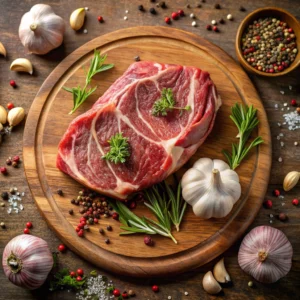
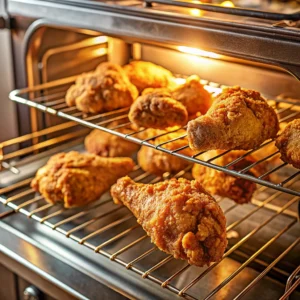

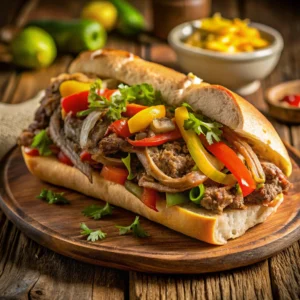
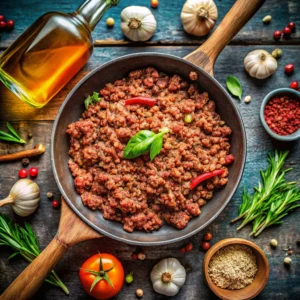



You might also like these recipes
Do You Wash Chicken Keema? The Ultimate Guide to Safe Handling
The Best Side Dishes to Serve With Chili Dogs
Is It Better to Pan Fry or Oven Bake Chicken?